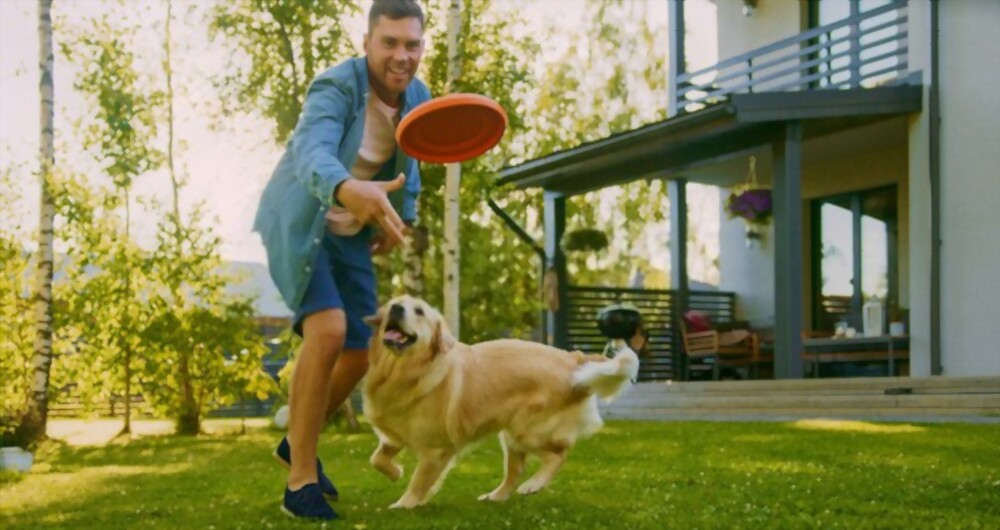Teaching your dog to fetch is not just a fun game to play; it also offers numerous benefits, including mental stimulation, physical exercise, and strengthening the bond between you and your furry friend. However, not all dogs instinctively know how to fetch, and some may need a little guidance to master this skill. In this article, pet barn will explore effective techniques and strategies to teach your dog to fetch, ensuring an enjoyable and rewarding experience for both of you.
1.Lay the Foundation with Basic Commands:
Before diving into fetch training, it’s crucial to establish a foundation of basic obedience commands such as “sit,” “stay,” and “drop it.” These commands provide control and structure during the fetching process, making it easier for your dog to understand and follow instructions. Spend some time practicing these commands with your dog, rewarding them with treats and praise for successful execution.
2.Choose the Right Fetching Toy:
Selecting the right fetching toy plays a vital role in capturing your dog’s interest and enthusiasm. Opt for a toy that is easy to hold, lightweight, and durable. Tennis balls, frisbees, or soft rubber toys designed for fetching are popular choices. Consider your dog’s size, breed, and preferences when making your selection. Some dogs may prefer a squeaky toy or one with a distinct smell, so take your dog’s preferences into account.
3.Introduce the Toy and Encourage Interest:
Once you have the perfect fetching toy, introduce it to your dog in a positive and engaging manner. Encourage your dog’s curiosity by letting them sniff and investigate the toy. You can rub it with a bit of food or play a short game of tug-of-war to build excitement and create a positive association. Make sure your dog sees the toy as something fun and desirable.
4.Play the “Tug and Release” Game:
Begin the training by playing a “tug and release” game with the toy. Hold one end of the toy and gently encourage your dog to grab the other end. Once they hold on, apply slight resistance and let them tug for a few seconds. Then, release your grip and give a cue like “drop it” or “let go” to teach them to release the toy on command. Reward your dog with praise or a small treat when they drop the toy. Repeat this game several times, gradually increasing the duration of tugging before the release.
5.Introduce Fetching Steps:
Now that your dog understands the concept of grabbing and releasing the toy, it’s time to introduce fetching. Start in a confined space, like a hallway or a small room, to minimize distractions. Toss the toy a short distance in front of you and encourage your dog to retrieve it. If needed, guide them with a gentle leash or verbal cues. Once your dog retrieves the toy, ask them to drop it using the command you previously taught. Reward their successful fetch with praise and a treat.
6.Gradually Increase Distance and Difficulty:
As your dog becomes more comfortable with fetching, gradually increase the distance you throw the toy. Celebrate every successful retrieval and continue reinforcing the “drop it” command. Additionally, you can introduce variations such as throwing the toy at different angles or incorporating obstacles to keep the game engaging and challenging for your dog. Remember to maintain a positive and encouraging tone throughout the training process.
7.Practice, Patience, and Persistence:
Consistency is key when teaching your dog to fetch. Practice short sessions regularly, gradually increasing the duration and difficulty level. Be patient with your dog, as learning a new skill takes time. If your dog loses interest or becomes distracted, take a break and try again later. Always end each session on a positive note, praising and rewarding your dog for their efforts. Remember, every dog learns at their own pace, so adjust the training according to your dog’s needs.
8.Troubleshooting Common Challenges:
While most dogs can learn to fetch with consistent training, some may face challenges along the way. Here are a few common issues and how to address them:
- Lack of Interest: If your dog seems uninterested in fetching, try using a different toy or incorporating treats into the game to make it more enticing. You can also try playing with other dogs who enjoy fetching to spark your dog’s interest.
- Reluctance to Release: Some dogs may have a strong instinct to hold onto the toy. In such cases, use higher-value treats or toys as a reward for releasing the toy. Gentle pressure on the sides of their mouth or trading the toy for a treat can also help teach them to let go.
- Difficulty Retrieving: If your dog struggles to bring the toy back to you, start by shortening the distance and gradually increase it over time. Using a longer leash or practicing in a confined space can also help them focus on the task at hand.
Teaching your dog to fetch can be an exciting and rewarding experience for both of you. By following these steps and techniques, you can effectively train your dog to become a fetching champion. Remember, every dog learns at their own pace, so be patient, stay positive, and enjoy the journey of bonding and playfulness with your four-legged companion. With consistent practice, your dog will soon be fetching like a pro, bringing joy and happiness to your playtime together.

